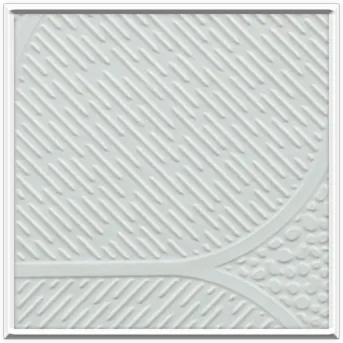- Afrikaans
- Albanian
- Amharic
- Arabic
- Armenian
- Azerbaijani
- Basque
- Belarusian
- Bengali
- Bosnian
- Bulgarian
- Catalan
- Cebuano
- Corsican
- Croatian
- Czech
- Danish
- Dutch
- English
- Esperanto
- Estonian
- French
- German
- Greek
- Hindi
- Indonesian
- irish
- Italian
- Japanese
- Korean
- Lao
- Malay
- Myanmar
- Norwegian
- Norwegian
- Polish
- Portuguese
- Romanian
- Russian
- Serbian
- Spanish
- Swedish
- Thai
- Turkish
- Ukrainian
- Uzbek
- Vietnamese
12月 . 03, 2024 17:50 Back to list
standard ceiling access panel sizes
Standard Ceiling Access Panel Sizes A Comprehensive Overview
When it comes to ensuring accessibility in construction and maintenance, the significance of ceiling access panels should not be underestimated. These small yet crucial components allow for easy access to the areas above ceilings, facilitating repairs, inspection of wiring, plumbing, and HVAC systems without extensive disruption. Understanding the standard sizes of ceiling access panels is essential for both builders and homeowners looking to incorporate these functional features into their spaces.
What is a Ceiling Access Panel?
A ceiling access panel is a removable panel that is installed in a ceiling to provide entry to concealed areas in a building. They are typically used in dry wall ceilings, plaster ceilings, and even in some drop ceilings. Access panels are designed to blend seamlessly into the existing structure, ensuring that they do not noticeably detract from the aesthetic appeal of a room while providing vital access to utility areas.
Common Sizes of Ceiling Access Panels
Ceiling access panels come in various sizes to accommodate different needs, and understanding the standard sizes helps in planning and installation. The most commonly available standard sizes for ceiling access panels include
1. 12 x 12 inches This size is widely used for small electrical or plumbing access points, making it a popular choice for residential applications.
2. 14 x 14 inches Slightly larger than the previous size, this panel is versatile and often used in both residential and commercial settings where access must be granted to slightly larger equipment or spaces.
standard ceiling access panel sizes

4. 24 x 24 inches One of the most popular sizes for ceiling access panels, this size provides ample space for accessing larger systems and is frequently used in both residential and industrial facilities.
5. 30 x 30 inches This size is used when larger accesses are necessary, often for maintenance of significant HVAC components or other extensive systems.
6. 36 x 36 inches Typically used in commercial and industrial applications, these sizeable panels allow for easy access to larger equipment and installations.
Factors Influencing Size Selection
When selecting the appropriate size for a ceiling access panel, several factors should be considered. The nature of the mechanical systems that require access, the frequency of maintenance, and the aesthetics of the room are all vital components in determining the suitable size. Additionally, local building codes and regulations may dictate specific dimensions required for certain types of installations.
Another important aspect is the installation environment. For example, access panels installed in high-traffic areas must be robust and capable of withstanding daily wear and tear, which may influence the choice of size and material.
Conclusion
In conclusion, standard ceiling access panel sizes vary widely, catering to various needs within both residential and commercial settings. From small dimensions suitable for minor repairs to larger sizes for substantial mechanical systems, understanding these standards assists in making informed decisions regarding architectural designs and renovations. By ensuring proper planning and installation of access panels, property owners can improve maintainability, enhance workflow, and minimize disruptions in both residential and commercial environments. Ultimately, investing in the right ceiling access panels is an investment in convenience and efficiency, pivotal for any building's maintenance protocol.
-
Transform Interiors with PVC Gypsum Ceiling: A Stylish, Durable, and Moisture-Resistant SolutionNewsMay.19,2025
-
The Smart Interior Upgrade: Discover the Durability and Versatility of Gypsum Ceiling Access Panel SolutionsNewsMay.19,2025
-
The Smart Choice for Interior Design: Discover the Value of PVC Gypsum Ceiling SolutionsNewsMay.19,2025
-
Mineral Fiber Ceiling Tiles: The Smart Blend of Performance and AestheticsNewsMay.19,2025
-
Mineral Fiber Ceiling Tiles: The Superior Choice Over Gypsum for Sound and Fire SafetyNewsMay.19,2025
-
Mineral Fiber Ceiling Tiles: Eco-Friendly Strength and Style for Every CeilingNewsMay.19,2025







